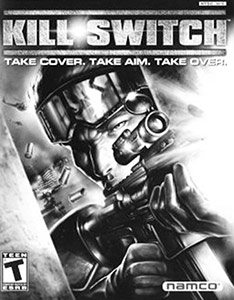Gaming The System: Gaming's surprising firsts
 CREDIT: NAMCO
CREDIT: NAMCOSlim Consoles
It seemingly started with Sony giving their consoles the slim treatment with the PSone and the PS2 Slim. Sleeker and sexier, but functionally identical to their launch counterparts, they've been hailed as cheaper and more attractive to buyers late into the console generation. The general idea has been copied by Microsoft and Nintendo with their own consoles.
All of that was predated by none other than Atari, with the slimmeddown 2600 console, the 2600 Jr. Released at the heel of the 1984 video game crash and sold at the budget price of $50, the 2600 Jr. earned some serious popularity, and continued to be manufactured up until 1992, 14 years after the release of the original 2600, spanning the influence of the ancient console over more than a decade.
Online Game Markets
For the handful of you who read my column, I love you very much, and also, you may recall my mentioning of Coleco's cable-based game delivery system. Yes, before Xbox Live Marketplace, or even Steam, the basic concept of delivering entertainment through tubes straight to brats who don't want to get off their asses has existed since the very early '80s, and again, in the '90s with the Sega Channel for the Genesis. While the high cost and lack of customer enthusiasm killed Coleco's visions (heh), the Sega Channel, on the other hand, lasted all the way up until the Genesis' discontinuation in 1998. Yes, yes, it doesn't use the Internet, but the fact that it's an ondemand delivery system for videogames qualifies this entry.
First-Person Shooters
“Of course!” you exclaim, probably in an angry letter to me (if it is, please send food along with it). “There were first person shooters before grandpappies Wolfenstein and Doom! What's the point?” Well, if you'd just let me say it, yes, FPSes go back before Wolfenstein and Catacombs in the '90s, and even before Battlezone and Red Baron in the '80s. Almost hand-in-glove, the first FPS was, in fact, a multiplayer game. Starting out as a computer experiment for NASA network computers in the early '70s, Maze War's concept was repeatedly ported and remade for several university computers, becoming most popular with the Xerox Alto. “Xerox?” you, the figment of my imagination, exclaim. “They played it on a photocopier?” No, Xerox, was, in fact, one of the leaders of home computing innovations, creators of the modern desktop environment so imitated by Apple and Microsoft, but that's a different story. Maze War, the simple concept of two characters shaped like eyeballs hunting each other down through 3D corridors, became the genesis for all the first-person goodness we have in our video games today.
Modern Cover-Based Systems
Gears of War (2006) featured burly space marines, homosexual undertones, and a slick third-person cover system that has been shamelessly copied since, because it just works. But of course, like any product that popularized an idea, the creation of that idea itself was the work of a predecessor. Enter Kill.Switch, a third-person-shooter by Namco; you'll probably find a copy of this forgotten game on eBay for a cheap price. Pop Kill.Switch into your PS2 and give it a whirl. Almost immediately, you feel how the game plays identically to Gears and all those other third-person-shooter greats. Everything, from blind firing to a fast-reload mechanic has been completely lifted from this game. The game's rather bland Middle- Eastern setting did it no favours in being remembered, but if game mechanics could be patented, Epic would be in so much trouble right now.













